Fresh Apricot Ginger Peasant Cake is a simple, earthy cake in the Clafouti tradition. And a delicious vehicle for fresh fruit and berries in late summer.
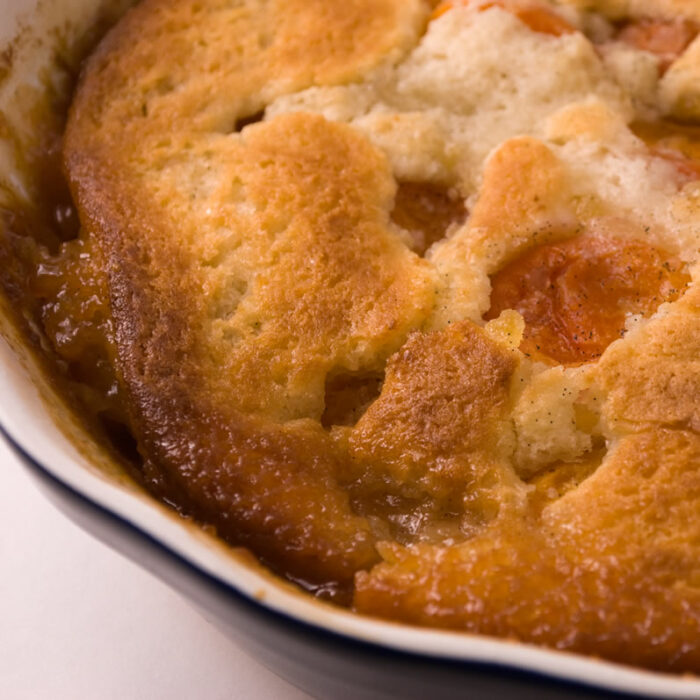
There’s a simple, earthy, peasant cake in the French culinary repertoire, from the region of Limousin, called clafouti (pronounced klah-foo-tee). And it’s an especially delicious way to treat fresh summer fruit and berries.

It consists of a layer of cakey-custard, topped with a layer of fruit. The result can be more like cake or more like custard, depending on the proportions in the batter. Sometimes clafouti is described as a pancake, and it does have a slight similarity to the high-rising German pancake called Dutch Baby. I have also eaten versions of peasant cake that are simple custards enrobing fruit–no flour in the batter at all.
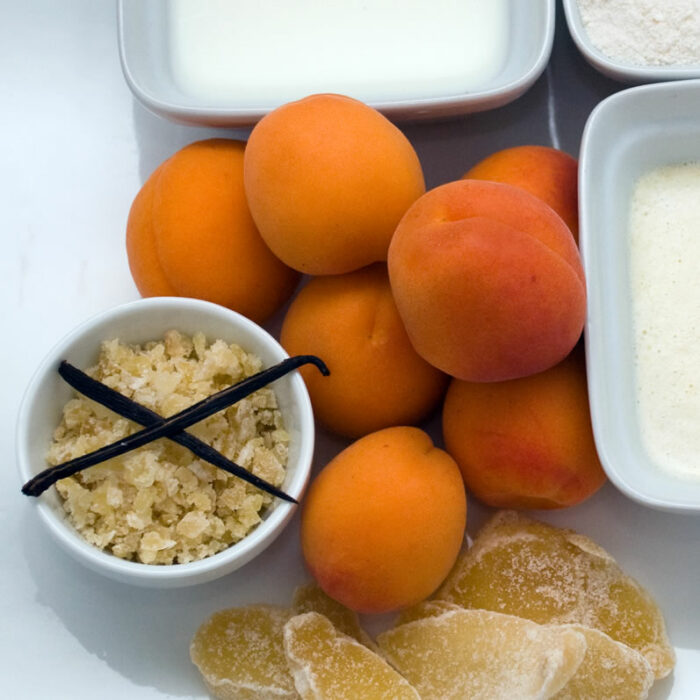
My version is on the other end of the spectrum. It contains no eggs and is cake-like (not a pancake, not a custard) with an unusual, distinctively chewy texture. Everyone who tastes it love it. I don’t recall where I stumbled on the formula, but I haven’t encountered it anywhere since.
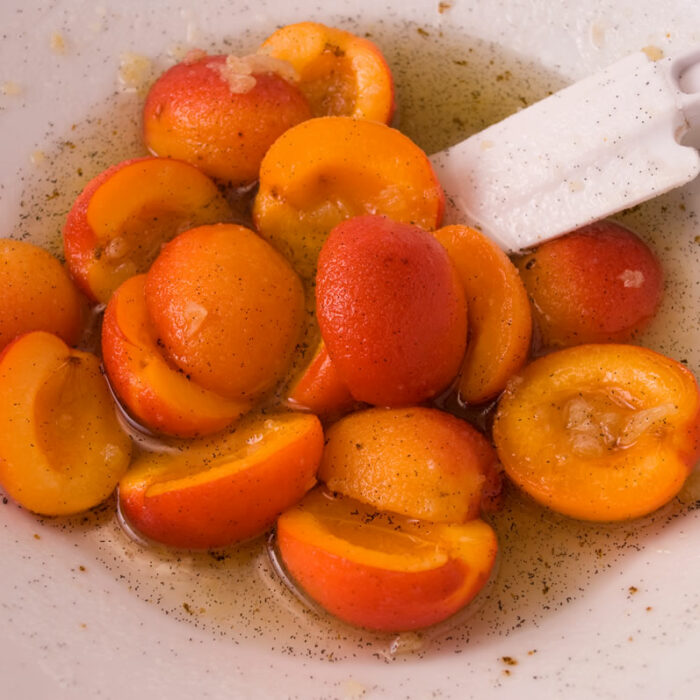
The success of this dish rests squarely on the quality of the fruit. Buy from a local grower, in season, if at all possible.
The apricots pictured here are a variety called Goldbar. I first encountered them in July 2007 from a grower who brought them from his farm in Eastern Washington to the Woodinville Farmers Market in Western Washington.
Then later, I found them again at the University District Farmers Market in Seattle. These are the best apricots I have ever eaten, incredibly aromatic with plenty of bright acidity. Look for them!
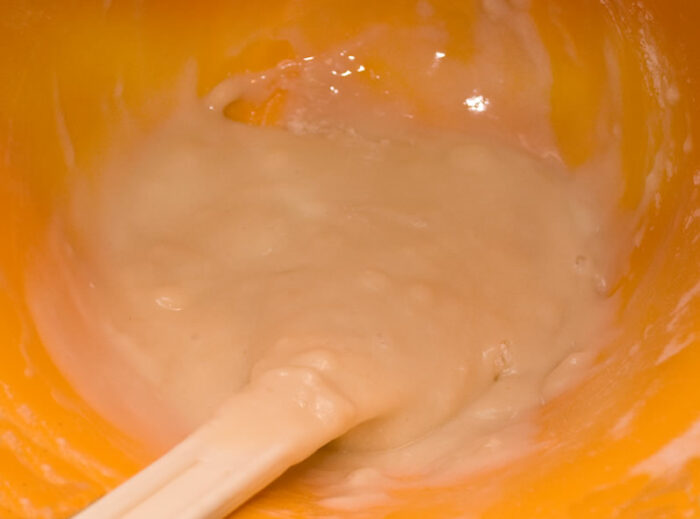
Because this peasant cake is so simple to make and not overly sweet, it makes an excellent addition to a breakfast or brunch menu. It’s also wonderful with afternoon tea, perhaps an organic Darjeeling Muscatel from Oregon tea purveyor, The Tao of Tea. It’s best eaten shortly after baking.
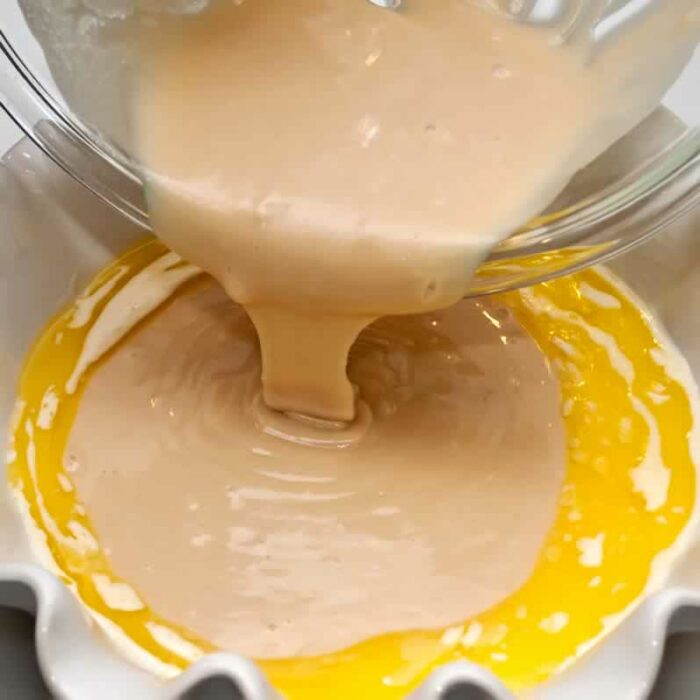
Inspiration Note Julia Child describes this classic dessert beautifully, along with several variations, in the inestimable, Mastering the Art of French Cooking, Volume 1. Her formula, however, is quite different than the one I’m sharing here.
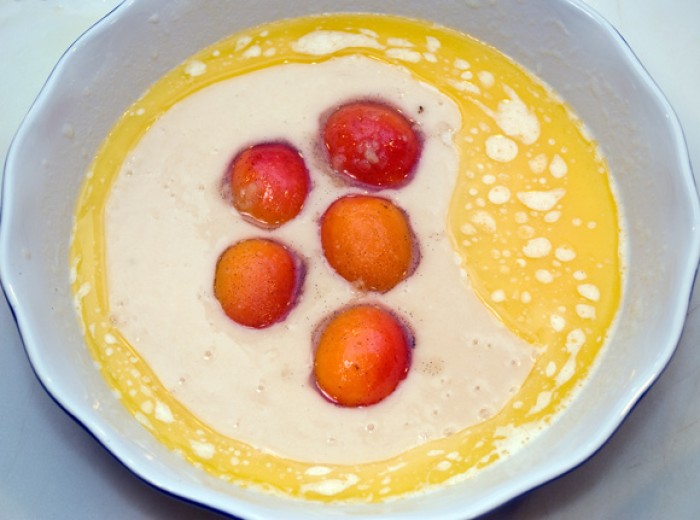
Fresh Apricot Ginger Peasant Cake
Apricots release their full depth of flavor only when cooked. Thus I’m always looking for ways to treat them to a little heat. They’re the perfect fruit for this simple cake, but blueberries, raspberries, blackberries, peaches, or sour cherries also work beautifully.
Ingredients
- 6 tablespoons unsalted butter, melted
Apricots
- 4 fresh, large apricots (8 if small)
- ½ cup sugar
- 3 tablespoons chopped candied ginger
- 2 tablespoons ginger-flavored liqueur (or nonalcoholic ginger beer)
- ¼ vanilla bean
Cake Batter
- ¾ cup King Arthur all-purpose flour, sifted
- ¾ cup sugar
- ¾ teaspoon baking powder
- ½ cup milk, plus 1 tablespoon
- 1 teaspoon vanilla extract
- ½ teaspoon ginger extract
Garnish
- powdered sugar in a shaker
Instructions
- To prepare the pie plate: Locate a 10½-inch diameter ceramic pie plate with a 5-6 cup capacity. (Another shape of shallow baking dish with the same capacity will also work.)
- Pour in the melted butter and tip the pie plate from side to side to cover all of it with butter. You may need to use a brush to lightly coat the edges of the pie plate with butter. Reserve.
- To prepare the apricots: Cut the apricots in half, remove the seeds and any remaining stems, and if large, cut each half in half again.
- Put the apricots in a medium-size bowl and add the sugar, candied ginger, and liqueur.
- With a small sharp knife, scrape the seeds from the inside of the vanilla bean into the bowl. (What remains of the vanilla bean can be used to flavor a bowl of sugar, a custard, or whatever.)
- With a flexible spatula, gently combine the apricots with the other ingredients. (If the apricots are not juicy enough, add 1-2 additional tablespoons water to dissolve the sugar.) Reserve.
- To prepare the cake batter: In a large bowl, sift together the flour, remaining 1 cup sugar, and the baking powder.
- With a wooden spoon, beat in the milk to produce a smooth batter. Don’t over beat, but batter shouldn’t have many lumps either.
- Pour the batter into the center of the buttered gratin dish. No worries, it will spread out on its own.
- Place the apricots, cut sides down, and their remaining liquid evenly over the batter, leaving a 3/4–inch open border of batter around the outside edges (this will allow the batter to rise dramatically at the edges).
- Place on a rack in the upper third of a preheated 375°F oven. Set an edged baking sheet on the rack below to catch any overflow.
- Bake for 40-45 minutes, or until the sides are fully puffed, the center is slightly puffed, and the top is golden brown.
- Remove from the oven to a wire rack to cook for 15 minutes before cutting. To serve, dust with powdered sugar and cut into wedges.

Copyright 2009-2022 Susan S. Bradley. All rights reserved.
